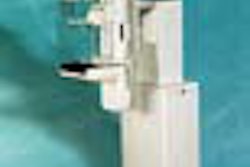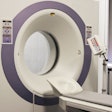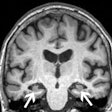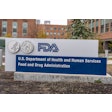A bill to establish federal requirements for education and licensure of personnel performing medical imaging and radiation therapy procedures could be introduced in Congress in coming weeks.
This bill, called the Medical Imaging and Radiation Therapy Quality Assurance Act, is being spurred on by the Alliance for Quality Medical Imaging and Radiation Therapy, a group of 11 societies led by the American Society of Radiologic Technologists and the Society of Nuclear Medicine's technologist section.
"The federal government regulates mammographers and that's a huge benefit to patients," said DuVonne Campbell, director of government relations for the ASRT. "But we feel that patients that undergo any medical imaging or radiation therapy procedure also deserve the highest standards of care."
However, unlike the Mammography Quality Standards Act, this proposed bill would affect only the technologists providing imaging exams. Imaging facilities would not be directly regulated by the act. Instead, state authorities would be required to ensure that technologists are properly credentialed, Campbell said.
The act would mandate accreditation standards for institutions providing education to technologists, and credentialing of persons who administer medical imaging and radiation therapy procedures, according to a draft of the bill. Credentialing standards would include minimum criteria for education, experience, examination, and other criteria chosen by the federal Health and Human Services department.
The proposal suggests that HHS should consult with organizations such as the ASRT and the Nuclear Medicine Technologists Certification Board to compile the standards.
States would be required to establish and maintain licensing programs compliant with the standards, and prohibit practicing without a license. The alliance is working with the bill's planned sponsor, Rep. Rick Lazio (R-NY), on suggestions for an enforcement mechanism. The current approach being considered is that states would not be able to participate in Medicaid's waiver program if they were not in compliance with the act.
MRI, CT, x-ray, nuclear medicine, and radiation therapy studies are covered by the proposed legislation. Ultrasound was not included due to opposition from several ultrasound societies, Campbell said. Those societies have opposed ultrasound's inclusion in similar legislation in the past, stating that because ultrasound does not generate ionizing radiation it shouldn't be categorized with other imaging modalities.
The ASRT expects the medical imaging and radiation therapy bill will be introduced by Rep. Lazio in the coming weeks. Lazio is a Congressman active in sponsoring healthcare legislation. The ASRT also hopes a companion bill will be introduced in the Senate, and is currently lobbying several potential senatorial sponsors.
Nine other organizations have written letters of support for the initiative, including the American College of Radiology, the International Society of Radiographers and Radiological Technologists, and the National Coalition for Quality Diagnostic Imaging Services.
If introduced, the bill wouldn't be the first time Congress has tackled the licensing of radiologic technologists. In 1981, the Consumer-Patient Radiation Health and Safety Act was signed into law by President Ronald Reagan, requiring that HHS develop minimum standards for state certification and licensure of persons who administer all imaging exams.
Subsequent amendments largely eliminated any enforcement mechanism from the act, however, making state adherence voluntary, Campbell said. Ultrasound was later excluded when the final rules were published in the Federal Register in 1985.
The 15 states that do not license radiologic technologists, according to ASRT, are: Alabama, Alaska, Georgia, Idaho, Kansas, Michigan, Missouri, Nevada, New Hampshire, North Carolina, North Dakota, Oklahoma, Pennsylvania, South Dakota, and Wisconsin. The District of Columbia also does not require licensure. Even in the 35 states with licensing programs, regulations vary widely, making a federal program a necessity, Campbell said.
Without federal standards, there's no way to ensure that a quality medical imaging procedure is taking place, according to Ceela McElveny, director of public relations for the ASRT. The ASRT believes imaging studies performed in outpatient settings are a particular cause of concern.
"In hospitals, you're going to find a significant portion with registered and credentialed technologists," she said. "We find that more of the abuse is in private practice or outpatient settings. This can be seen in a wide range of studies, covering all the disciplines and specialties."
The ASRT's effort on behalf of the bill isn't the only lobbying activity the society has performed recently. Last week, the organization submitted written testimony to several Congressional committees in support of the Institute of Medicine's recommendations that Congress establish a Center of Patient Safety. The society also advocated that the nation's medical providers set a goal of reducing medical errors by 50% over the next five years.
By Erik L. Ridley
AuntMinnie.com staff writer
March 3, 2000
Let AuntMinnie.com know what you think about this story.
Copyright © 2000 AuntMinnie.com



















